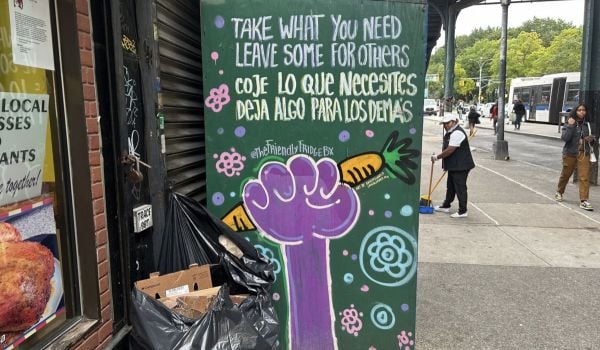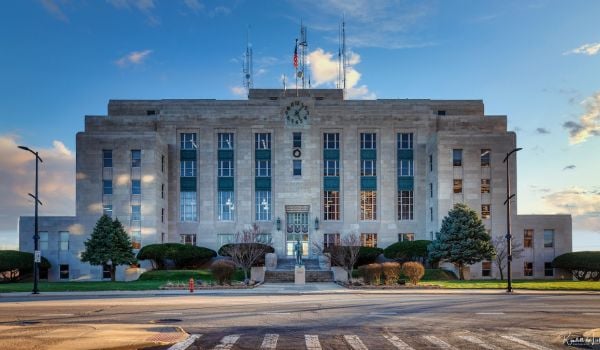A federal rental assistance program is drawing to a close, and housing stability programs are facing higher demand as eviction filings have risen.
Jason Allen, community resolution program manager for the city of Boulder, Colorado, said to stretch funds available for rental assistance, the city began limiting rent relief to those facing eviction this year. Because Boulder’s eviction prevention program launched in 2021, one thing’s uncertain: What is the level of need for housing support when we’re out of the pandemic?
“It’s a tough time for us to make really long-term decisions about the program because we just don’t know what that looks like,” Allen said.
Many short-term rent assistance programs created during the pandemic have ended. Others have become permanent, expanded or led to new housing organizations. Some, like Boulder’s, were permanent from their inception.
And as in Boulder, new housing assistance programs are balancing sustainability concerns with uncertainties from inflation and a looming recession—all while continuing to see effects of the pandemic.
“Some families have had expenses from hospitalizations,” said Veronica Gonzalez, assistant director of the city of San Antonio, Texas’ Neighborhood and Housing Services Department. “Some are experiencing long-term covid-19 symptoms. Health and housing access are connected.”
New housing assistance programs emerge from pandemic
The pandemic economy threatened many Americans’ housing stability, and federal relief packages responded by devoting about $47 billion to a US Treasury Department program for emergency rental assistance.
Before the pandemic, only a few dozen communities had rental assistance or eviction prevention programs, according to the Treasury Department. Many local and state governments created rent relief programs for the first time using the Treasury funds.
Despite criticism that some programs were slow or reluctant to deliver assistance, the Treasury Department’s rental assistance program has provided 10.8 million rental assistance payments to families, according to the agency.
The department has redistributed funds from places where it went unspent to other local and state programs. As of last month, the department has reallocated more than $4.8 billion in rent assistance funds.
Since the pandemic, about 180 local and state governments have developed or strengthened eviction diversion programs, according to the Treasury Department.
One new effort in the works is Shelterwell, an Oklahoma City nonprofit that emerged from Community Cares Partners, which was created to distribute federal rent assistance dollars in Oklahoma. Community Cares Partners stopped accepting rent assistance applications last year.
Shelterwell aims to provide long-term solutions to housing instability, an area where Coldren believes rent assistance falls short.
“A lot of what we have seen with eviction court specifically in Oklahoma County is a lack of understanding in terms of what (tenants’) rights are,” said Shelterwell CEO Amy Coldren, adding that sometimes the county’s eviction docket has as many as 300 cases on it.
Shelterwell is developing tenant and landlord education programs to potentially include incentives for property managers to lease to renters who complete the training. The nonprofit is also developing eviction prevention services and self-help resources, like a template for repair requests.
Two young programs evolve to serve renters’ changing needs
In 2019, the San Antonio City Council approved a housing assistance program that included relocation, rent and mortgage assistance.
Creating the program before the pandemic laid the groundwork for the city to disperse Treasury rent assistance dollars more quickly than other programs that weren’t in place before covid. That advantage allowed the city to obtain some of the highest reallocations in Texas from the Treasury rental assistance funds, according to federal data.
During the pandemic, the program has grown to offer a right-to-counsel program for renters facing eviction, mediation, and other services.
“Now it’s (about) understanding that we can do more to help individuals and families on what next steps they can take, and they’re not doing it alone,” Gonzalez said.
Eviction filings in Bexar County, home to San Antonio, have risen to almost 500 per week, Gonzalez said. At the same time, some property owners have become less likely to accept repeated rental assistance.
“In those instances,” she said, “it’s really important we have our fair housing counselors and housing navigators available to negotiate move-outs and provide resources like relocation assistance so that families have more options and a dignified transition while they’re going through a difficult time.”
Boulder’s eviction prevention program got its start from a ballot initiative that voters approved in 2020. The measure created the program and a tax on landlords to fund it. The statute requires Boulder landlords pay a $75 annual tax on each of their long-term rental units.
The program, which launched in 2021, provides right to counsel, mediation, and rental assistance. A tenant advisory committee provides feedback and perspective to the program.
During the past few years, Allen and his team have noticed that untreated mental health conditions and a gap in mental health resources can hamper housing stability.
“We do think that talking about mental health access and trying to bring more mental health resources is going to benefit the community and the people we work with,” Allen said.
This story was reported by Streetlight, a nonprofit news site based in Oklahoma City. Learn more about their mission to report stories that envision a more equitable world at StreetlightNews.org.
Mollie Bryant is the executive director and editor of Streetlight, a female-led, nonprofit news site based in Oklahoma City covering stories that envision a more equitable world.
















